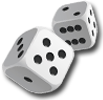



play board games
Board game reviews, strategy tips & session reports
Mars Needs Mechanics Review
 Stats:
Stats:
No. of players: 2-4
Amount of time to play: 45-60 min
Age requirements: 10+
Set-up time: 5 min
Mars Needs Mechanics is a set collection and stock market game. You must bid on components and sell them in order to make the most money by the game’s end.
Mars Needs Mechanics Rules Description:
You start Mars Needs Mechanics with 30 cogs (the game’s currency) two scrap cards and three random component cards. Then you mark the starting value of each component (five cogs) and randomly order the component tokens on the track on the outside of the board. You place eight component cards face up by the board, creating the market. These are the components for sale this round. Lastly you place four mechanism cards face-up near the board.
On your turn you must either buy a component card or pass. Then you may build or break down on of the mechanisms. When you buy a component its token moves to the front of the line on the outside track. If you pass you, you may not purchase a component card this turn, but can buy one in later turns. Once all the component cards have been bought or all players consecutively pass the round is over.
Next you set the component values and sell sets. The three components that ended at the front of the outside track gain one cog of value. And the three components at the end of the outside track lose one cog of value. Then you may sell components in sets of three or more. Scrap cards are wild for determining the number of cards in a set but is not worth anything.
Building and breaking down mechanisms are optional actions. The ten different mechanisms give you unique special abilities. One lets you sell components for more than they are worth and another lets you sell in the middle of the round. To build a mechanism you must place the required cards in front of you. Then you mark the mechanism card with your player tokens. Cards you use to build a mechanism are not available to sell, but you can break down any mechanism at the end of your turn.
Before you start the next round you restock the market to eight cards and pass the first player token to the left. The game ends when there are no more cards to restock the market or no one buys components for two consecutive rounds. After either occurs you adjust component values and conduct one last sell. Then you total your cogs and the player with the most cogs wins the game.
Quick Review of Mars Needs Mechanics:
Mars Needs Mechanics is fun, tactical and looks great. The theme seems a little pasted on but the game mechanics are solid.
The art, cards and rules for this game look excellent. The token, cog and card quality is top-notch and the rules are well laid out and easy to follow.
This game has a tight design and is full of tense decisions. Timing is everything. You must weigh getting a card you want early against waiting to buy it and keep its value high, but possibly missing the chance to buy it. This game is easy to teach, learn and play, but hard to master.
The mechanisms add variety to the gameplay. You may adjust your buys based on the mechanisms in the game. The random market makes you adjust on-the-fly. The game is tactical and long range planning can be hard especially in games with three or four players.
Mars Needs Mechanics is good but for some reason it seems too dry to me. Maybe it is the fact you gain only a few cogs when selling and I want to make more when I sell. Or the fact I am not very good at the game.
I appreciate this game’s elegant design and you should definitely try it out, it just might find a place in your collection.
Score and synopsis: (Click here for an explanation of these review categories.)
Strategy 4 out of 6
Luck 4 out of 6
Player Interaction 5 out of 6
Replay Value 4 out of 6
Complexity 3 out of 6
Fun 4 out of 6
Overall 4 out of 6

Leave a Reply